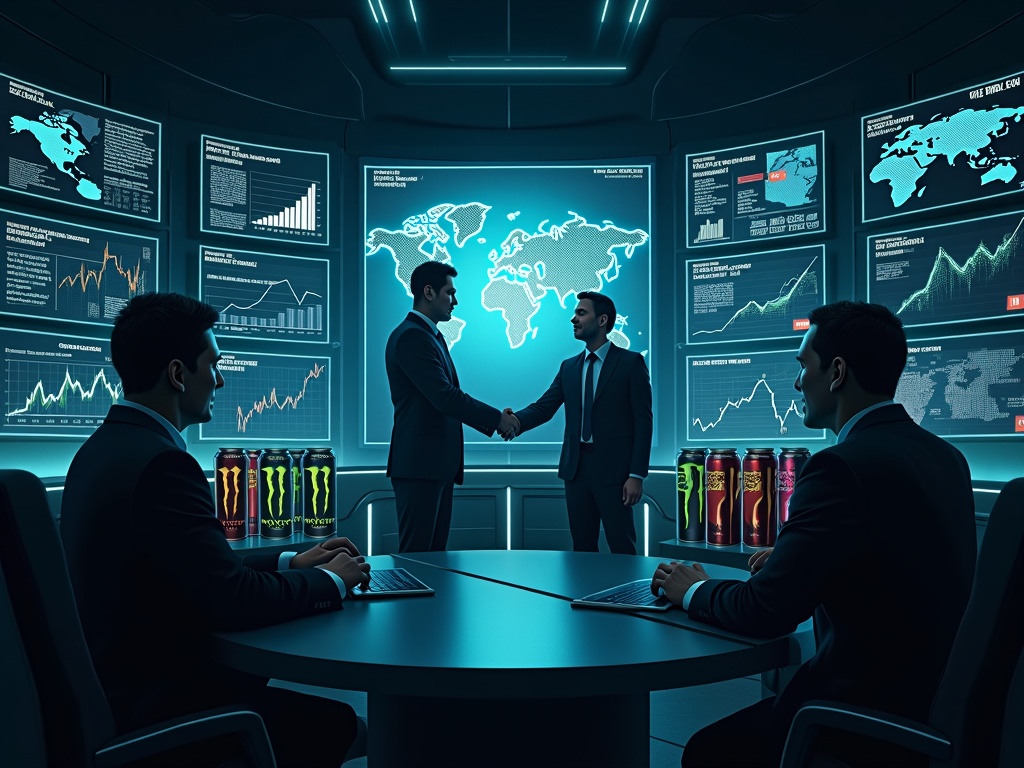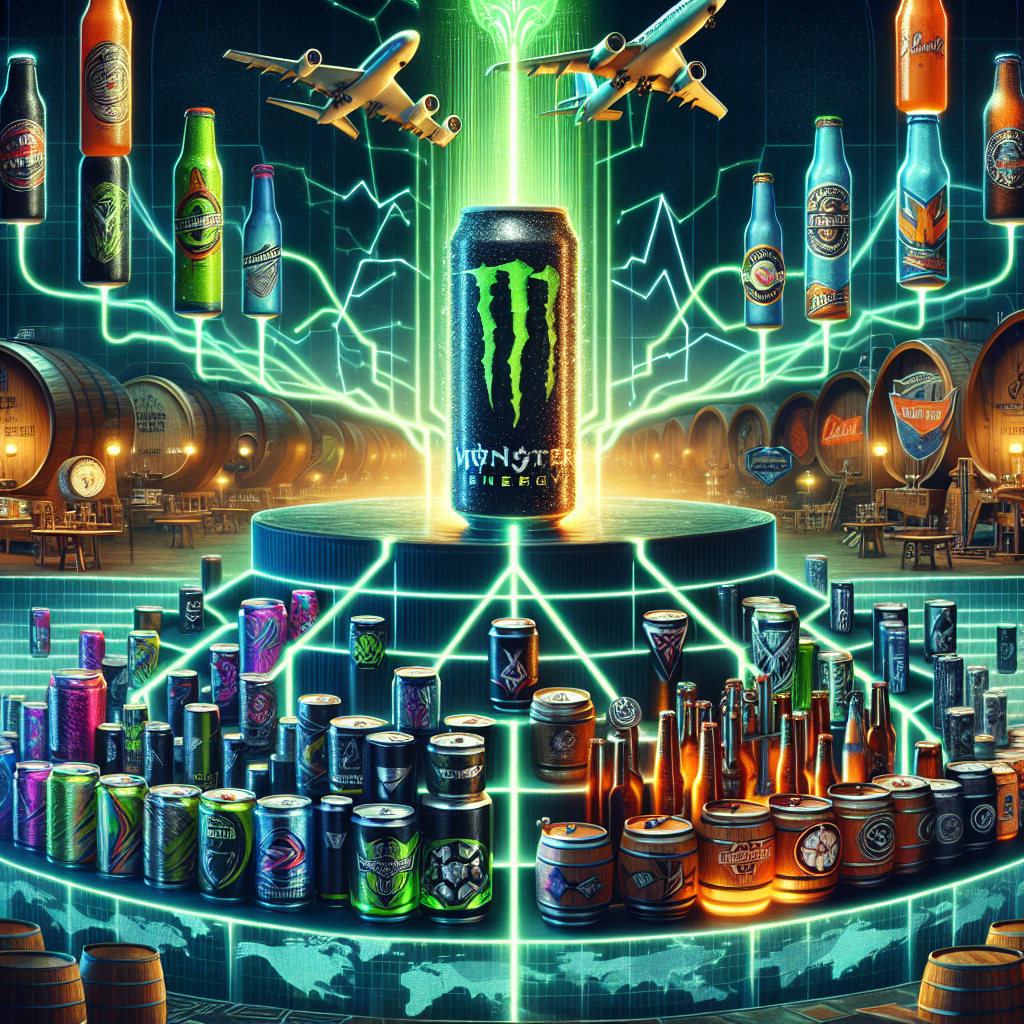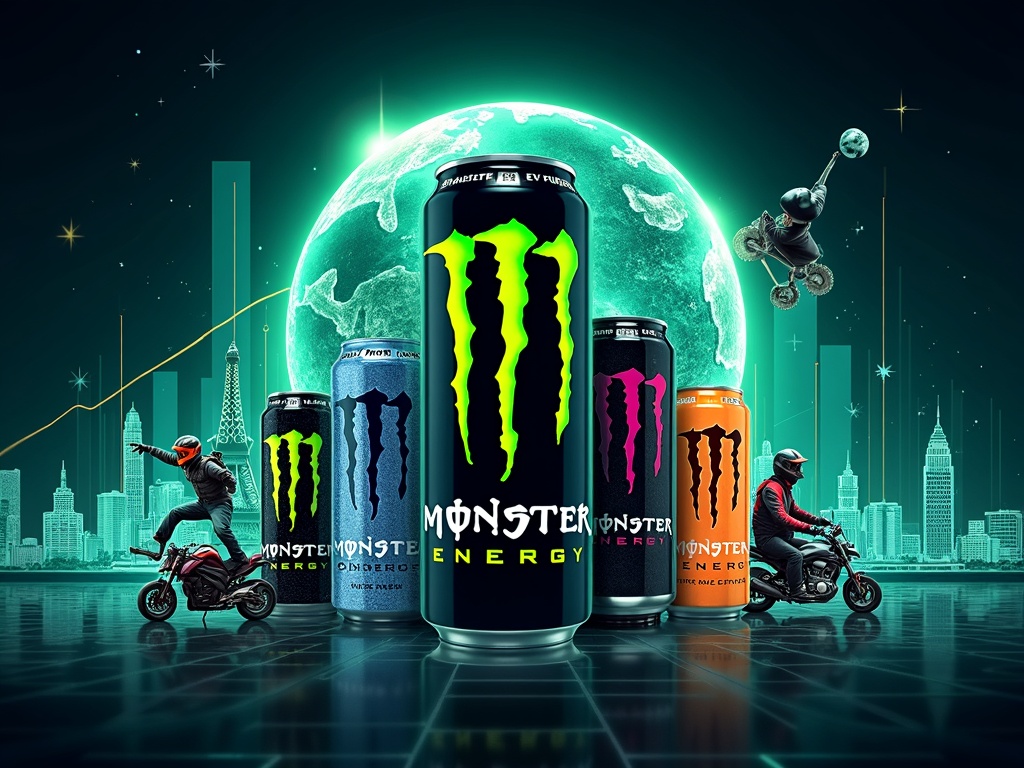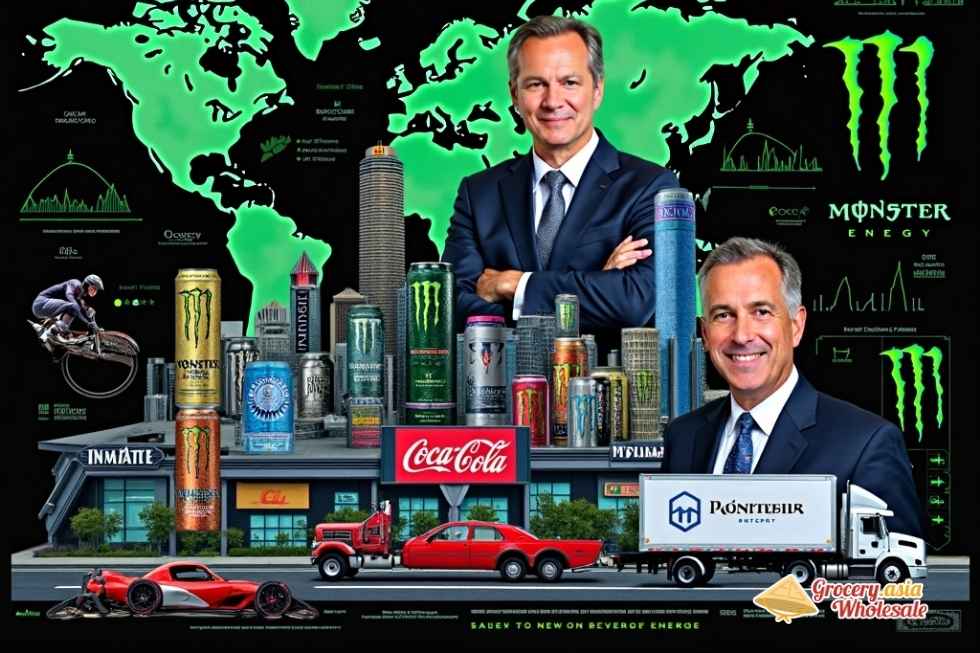No products in the cart.
Beverages News, Energy Drinks, Monster Energy Drink
Who Owns Monster Energy The Facts You Should Know
Monster Beverage Corporation, the parent company of Monster Energy, is a publicly traded powerhouse listed on NASDAQ under the ticker MNST, with ownership spread among thousands of shareholders, emphasizing a unique structure compared to many private competitors.
Table of Contents
Key Takeaways
- Monster Beverage Corporation is publicly traded on NASDAQ under ticker symbol MNST, distributing ownership among shareholders unlike privately held rivals such as Red Bull.
- Rodney Sacks and Hilton Schlosberg, South African entrepreneurs, acquired the company in 1992 for $14.6 million and continue to serve as Co-CEOs more than three decades later.
- Coca-Cola is the largest individual shareholder, holding approximately 19.5% of the company thanks to a $2.15 billion strategic investment made in 2015.
- Diversification: Monster has broadened its brand portfolio to include Reign, Bang Energy, NOS, and CANarchy Craft Brewery Collective.
- Global Market Share: Monster holds the second-largest market share in the energy drink sector and reported $7.14 billion in net sales in 2023, indicating strong double-digit growth.
Leadership and Strategic Continuity
Sacks and Schlosberg’s long-running leadership since the initial $14.6 million acquisition offers strategic continuity seldom seen in the beverage industry. Their experience and vision have guided the company through tremendous growth, acquisitions, and market expansion.
The Coca-Cola Partnership
Coca-Cola’s 19.5% stake in Monster, acquired through a strategic $2.15 billion investment in 2015, brings both opportunities and challenges. On one hand, it gives Monster access to Coca-Cola’s formidable distribution capabilities and global presence. On the other hand, Monster must navigate its growth while accommodating a major stake held by a top global beverage competitor.
Brand Portfolio Diversification
The company’s smart diversification beyond Monster Energy includes:
- Reign – A performance drink aimed at fitness enthusiasts.
- Bang Energy – Popular among gaming and youth culture consumers.
- NOS – Resonates with automotive and racing communities.
- CANarchy – A bold entry into the alcoholic beverage market through a collective of craft breweries.
Financial Performance and Market Position
Monster’s impressive $7.14 billion in net sales for 2023 is a testament to its successful business model and the ability to adapt to changing consumer trends. The company’s continued double-digit growth rate underscores its resilience and innovation in a competitive market.
Benefits of Public Ownership
The public ownership structure grants Monster the financial flexibility to raise capital for expansions and acquisitions — an important strategic advantage in the aggressive energy drink market where branding, R&D, and distribution require ongoing investment. Unlike privately held firms like Red Bull, Monster leverages this structure to remain agile and fast-moving in a crowded global marketplace.
Monster Beverage Corporation: The True Owners Behind the Brand
I can tell you that Monster Energy is owned by Monster Beverage Corporation, a publicly traded U.S. company listed on NASDAQ under the ticker MNST. This corporate structure means that ownership isn’t concentrated in the hands of a single individual or family, but rather distributed among thousands of shareholders who purchase stock on the open market.
From Hansen Natural to Monster Beverage
The company originally operated under the name Hansen Natural Corporation before making a strategic rebrand to Monster Beverage in 2012. This transformation occurred after Monster Energy’s explosive popularity established the energy drink as the company’s flagship product. The rebrand reflected the reality that Monster Energy had become the primary driver of corporate revenue and brand recognition.
Market Position and Shareholder Structure
As of early 2024, Monster’s market capitalization exceeds $55 billion, positioning it as one of the largest beverage companies globally. This massive valuation demonstrates the brand’s financial strength and market dominance in the energy drink sector. The public trading structure creates several key advantages that set Monster apart from its competition:
- Any investor can purchase shares and become a partial owner of the Monster brand
- Stock prices reflect real-time market confidence in the company’s performance
- Financial transparency requirements provide detailed quarterly and annual reports
- Shareholder voting rights give investors a voice in major corporate decisions
- Liquidity allows shareholders to buy and sell ownership stakes easily
Unlike privately held competitors such as Red Bull GmbH, Monster’s open structure contributes to strong investor confidence and corporate transparency. This accessibility has helped fuel the company’s growth and global expansion efforts over the past decade.
The public ownership model also means that Monster Beverage Corporation must answer to its shareholders through regular financial disclosures and strategic updates. This accountability has driven consistent performance improvements and helped establish Monster as a leader in the competitive energy drink market. The company’s stock performance continues to attract both institutional investors and individual shareholders who recognize the brand’s potential for continued growth.
The South African Duo Who Built a Beverage Empire
I’ve witnessed countless business transformations, but few match the remarkable journey of Rodney Sacks and Hilton Schlosberg. These two South African entrepreneurs fundamentally changed the energy drink landscape when they acquired Hansen Natural Corporation in 1992 for just $14.6 million.
Their backgrounds couldn’t have predicted such massive success. Both men brought diverse business experience from South Africa before setting their sights on the American beverage market. What started as a small juice company became the foundation for something much larger.
From Juice to Energy Drink Dominance
In 2002, Sacks and Schlosberg made a decision that would reshape their company’s future. They launched the Monster Energy brand, betting everything on a new category that was just beginning to gain traction. This wasn’t merely about creating another beverage – they were building an entirely new brand identity.
Their approach differed significantly from traditional beverage companies. Instead of focusing solely on taste or nutritional benefits, they crafted an entire lifestyle around the Monster brand. The distinctive claw mark logo and aggressive marketing campaigns resonated with young consumers in ways competitors couldn’t replicate.
Leadership That Drives Continued Innovation
Both executives remain Co-CEOs today, maintaining direct control over Monster’s strategic direction. Their dual leadership structure might seem unusual, but it’s proven incredibly effective for maintaining consistent vision while managing rapid growth.
Sacks and Schlosberg didn’t stop at creating one successful product. They’ve continuously expanded Monster’s portfolio, introducing new flavors, variants, and even entering adjacent categories. Their combined expertise guides everything from product development to international expansion strategies.
The numbers speak volumes about their success. What began as a $14.6 million investment has grown into a multi-billion-dollar enterprise that competes directly with industry giants like Red Bull. Their global expansion strategy has established Monster as a household name across dozens of countries.
I find their approach to brand building particularly impressive. Rather than relying solely on traditional advertising, they’ve created authentic connections with extreme sports, gaming, and music communities. This grassroots marketing strategy has built incredibly loyal customer bases that continue driving sales growth.
Their leadership philosophy emphasizes innovation while maintaining the edgy brand identity that originally set Monster apart. Sacks and Schlosberg understand that energy drink consumers don’t just buy caffeine – they’re buying into a lifestyle and attitude that Monster represents.
Major Stakeholders: Coca-Cola’s Strategic Partnership and Institutional Investors
The landscape of Monster Energy‘s ownership changed dramatically in 2015 when The Coca-Cola Company acquired a 16.7% stake for $2.15 billion. This strategic investment has since grown to approximately 19.5%, establishing Coca-Cola as Monster’s largest individual shareholder while maintaining Monster’s operational independence.
The Coca-Cola Partnership: A Strategic Alliance
This partnership delivered immediate benefits to both companies through a carefully structured agreement. Monster gained access to Coca-Cola’s global distribution network, dramatically expanding its reach through established bottling partnerships worldwide. The deal included a comprehensive brand swap that reshaped both companies’ beverage portfolios. Monster acquired Coca-Cola’s energy drink brands, including NOS, Full Throttle, and Burn, while transferring its non-energy beverage lines to Coca-Cola.
Despite Coca-Cola’s substantial financial stake, Monster maintains its independence in management decisions and strategic direction. This arrangement allows Monster to leverage Coca-Cola’s distribution expertise while preserving the entrepreneurial culture that fueled Monster’s success in the energy drink market.
Institutional Investment Landscape
Institutional investors control the majority of Monster Energy shares, reflecting Wall Street’s confidence in the company’s long-term prospects. The Vanguard Group holds approximately 8% of outstanding shares, making it one of the largest institutional stakeholders. BlackRock, Inc. maintains roughly 7% ownership, while State Street Corporation rounds out the top institutional investors.
This diversified ownership structure demonstrates several key factors in Monster’s market position:
- Institutional confidence in Monster’s growth trajectory and market leadership
- Professional fund managers’ belief in the energy drink sector’s expansion potential
- Strategic positioning by major investment firms in the beverage industry
- Long-term institutional commitment to Monster’s business model
The combination of Coca-Cola’s strategic partnership and strong institutional backing creates a stable ownership foundation for Monster Energy. This structure supports Monster’s global expansion while maintaining the agility needed to compete effectively in the dynamic energy drink market. Institutional investors provide market credibility and financial stability, while Coca-Cola’s partnership offers operational advantages without compromising Monster’s independent decision-making capabilities.

Monster’s Expanding Brand Portfolio Beyond the Green “M”
Monster Beverage Corporation has transformed itself from a single energy drink company into a comprehensive beverage empire with an extensive collection of brands spanning multiple categories. The company’s portfolio includes well-known energy drink names like Monster Energy, Reign Total Body Fuel, NOS, Full Throttle, Burn, Mother, Predator, Relentless, BPM, and Live+. Each brand targets specific consumer segments and regional preferences, allowing Monster to capture market share across diverse demographics and geographic locations.
The strategic expansion reached a significant milestone in 2023 when Monster acquired Bang Energy, strengthening its position in the fitness and performance drink category. This acquisition brought a brand with a devoted following among gym enthusiasts and athletes, complementing Monster’s existing Reign line and broadening its appeal in the premium performance segment.
Strategic Diversification Into New Beverage Categories
Monster’s acquisition strategy extends beyond energy drinks into completely different beverage sectors. The company purchased CANarchy Craft Brewery Collective, adding respected craft beer labels including:
- Cigar City Brewing from Tampa, Florida
- Oskar Blues Brewery from Colorado
- Deep Ellum Brewing Company from Dallas, Texas
- Several other regional craft beer brands
This diversification demonstrates Monster’s commitment to becoming a broad-based beverage powerhouse rather than remaining confined to the energy drink space. By entering the craft beer market, Monster taps into the growing consumer preference for premium, artisanal beverages while leveraging its distribution network and marketing expertise.
The diverse portfolio gives Monster a competitive advantage across multiple beverage segments worldwide. Rather than competing solely on energy drinks, the company can:
- Cross-promote brands
- Share distribution channels
- Capture wallet share from consumers who prefer different types of beverages throughout their day
This strategy reduces dependence on any single product category and provides protection against market fluctuations in specific segments.
Monster’s global distribution network supports this expanded portfolio effectively, allowing the company to introduce new brands in established markets while maintaining strong relationships with retailers. The acquisition strategy positions Monster to capitalize on emerging beverage trends and consumer preferences, ensuring sustained growth beyond traditional energy drink boundaries. This approach reflects the company’s evolution from a focused energy drink manufacturer to a diversified beverage corporation with significant market presence across multiple categories.

Monster’s Market Dominance and Financial Success
I’ve watched Monster Energy climb to become the second-largest energy drink brand globally, trailing only Red Bull in total market value. This impressive positioning reflects the brand’s strategic execution and understanding of consumer preferences across different markets.
U.S. Market Leadership and Global Performance
Monster frequently leads in volume share within the U.S. market, commanding around 39% compared to Red Bull’s 37%. This slight edge demonstrates Monster’s ability to connect with American consumers through targeted marketing and product innovation. The company’s global dominance extends far beyond domestic borders, creating a substantial international footprint that contributes significantly to overall revenue.
Financial performance tells an equally compelling story. Monster reported $6.31 billion in net sales in 2022, then achieved an impressive jump to $7.14 billion in 2023. This consistent double-digit growth pattern showcases the brand’s resilience and market appeal during varying economic conditions. Such growth figures position Monster as a standout performer in the beverage industry.
Monster’s operating margins and brand loyalty have transformed it into a top-performing consumer stock on the NASDAQ. Investors recognize the company’s ability to maintain pricing power while expanding market share, creating a combination that drives shareholder value. The brand’s remarkable success stems from several key factors that differentiate it from competitors.
Strong international demand continues to fuel expansion opportunities. Monster’s global distribution network allows the company to capitalize on emerging markets where energy drink consumption is rising rapidly. This international reach provides multiple revenue streams and reduces dependence on any single geographic market.
Innovative marketing strategies have become a hallmark of Monster’s approach. The brand consistently invests in extreme sports sponsorships, music festivals, and gaming partnerships that resonate with its core demographic. These marketing investments create authentic connections with consumers who view Monster as more than just an energy drink.
Expanding product lines cater to health-conscious and performance-driven consumers who demand variety and quality. Monster has introduced:
- Sugar-free options
- Protein-enhanced drinks
- Specialized formulations
This product diversification strategy helps capture market segments that traditional energy drinks might miss.
Consumer loyalty remains strong across Monster’s product portfolio, with repeat purchase rates exceeding industry averages. This loyalty translates into predictable revenue streams and provides a foundation for launching new products. The company’s understanding of ownership structure and strategic partnerships also contributes to its market position, allowing for efficient decision-making and resource allocation that supports continued growth.

Sources:
Monster Beverage Corporation – “2023 Annual Report”
Monster Beverage Corporation – “Investor Relations: FAQs”
The Coca-Cola Company – “Coca-Cola Completes Transaction With Monster Beverage Corporation” (Press Release, 2015)
Reuters – “Monster Beverage CEO Confident of Winning Bang Energy Auction”
Yahoo Finance – “Monster Beverage Corporation (MNST) – Holders”


